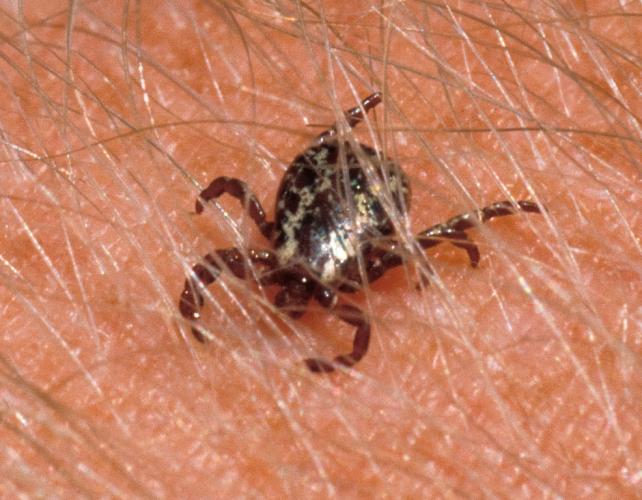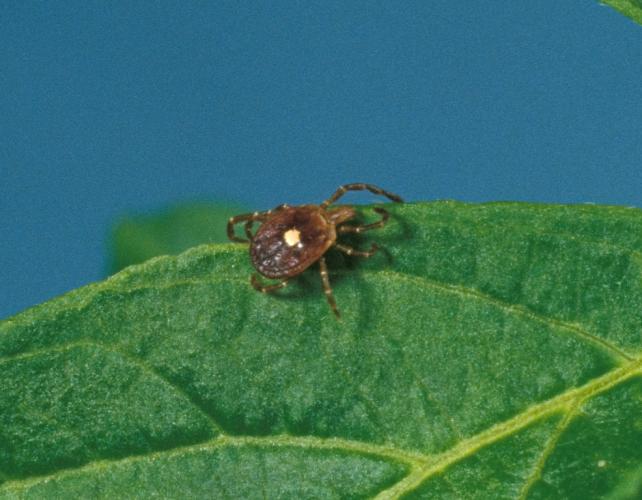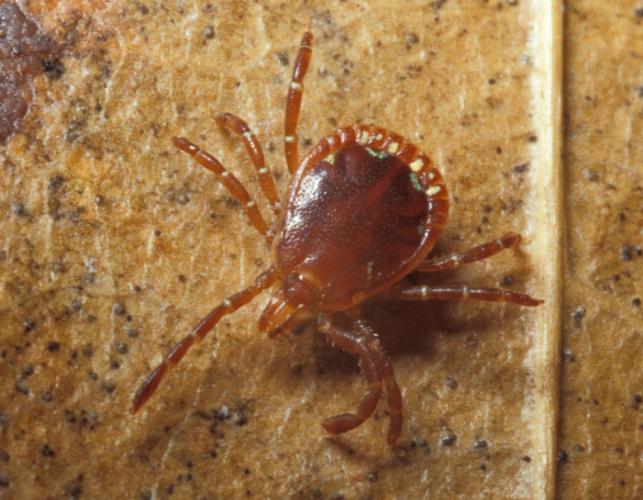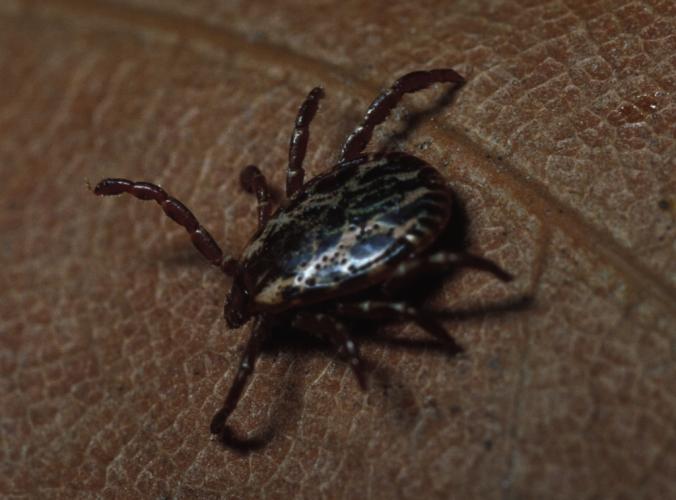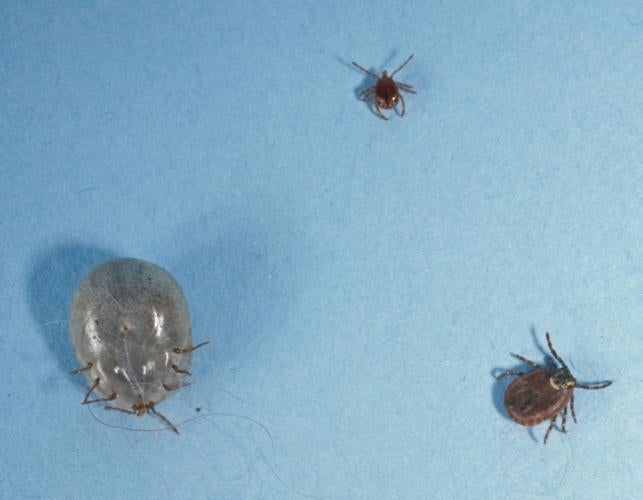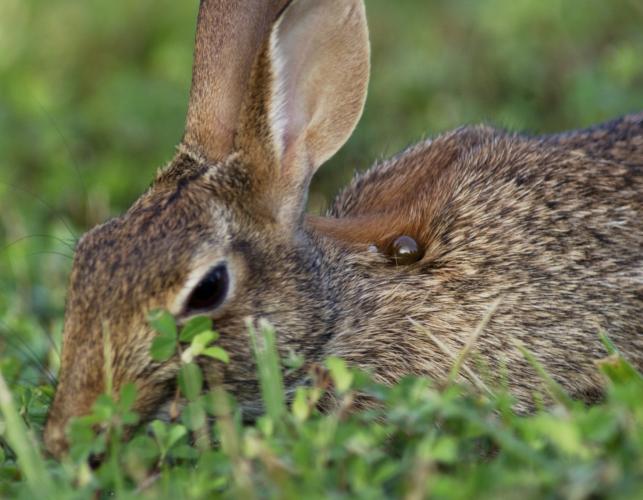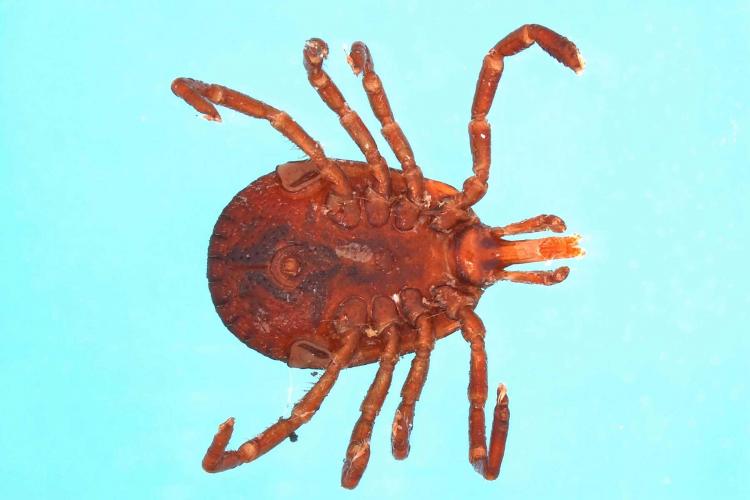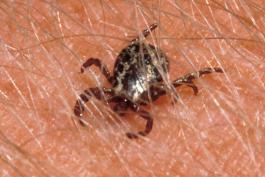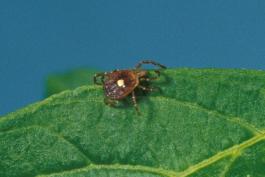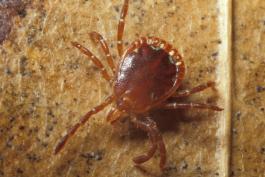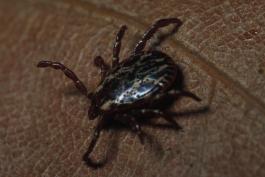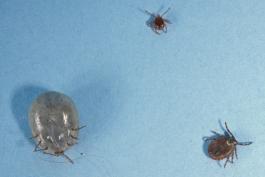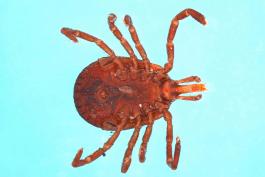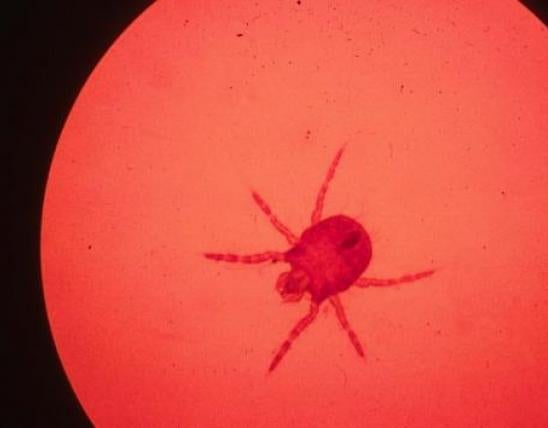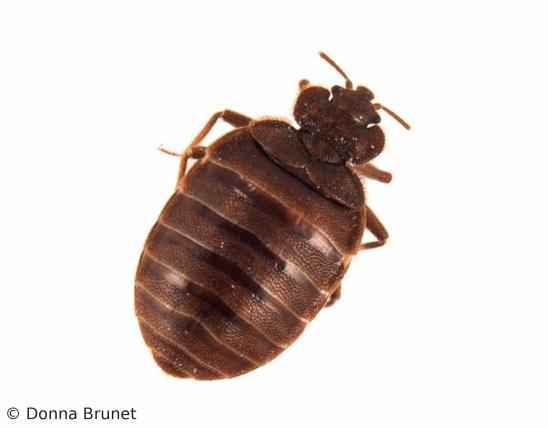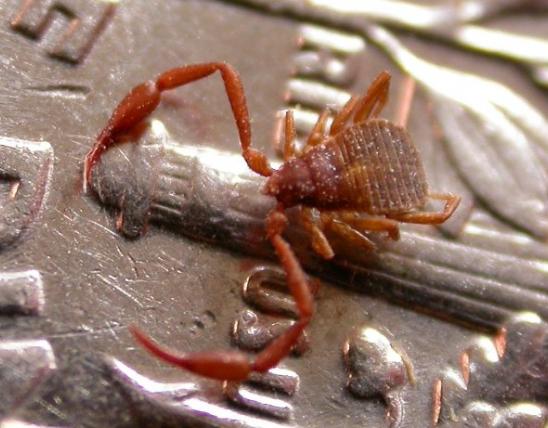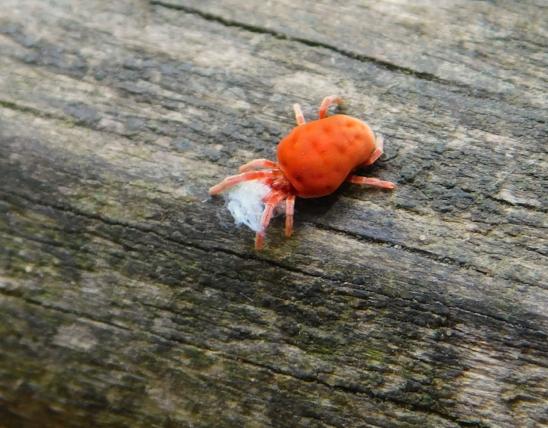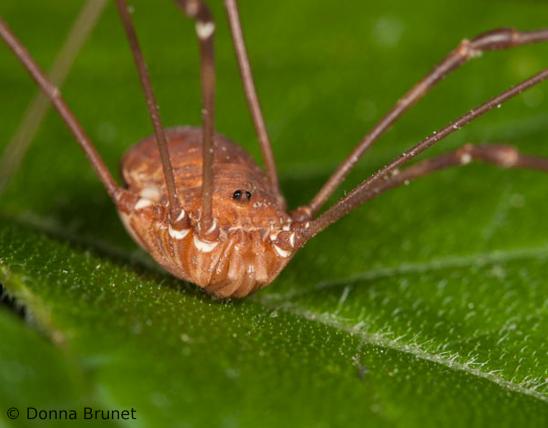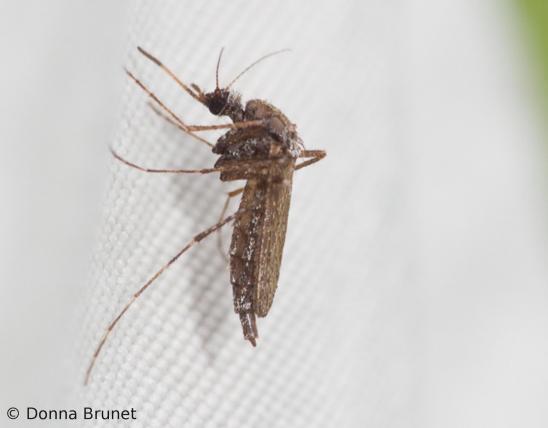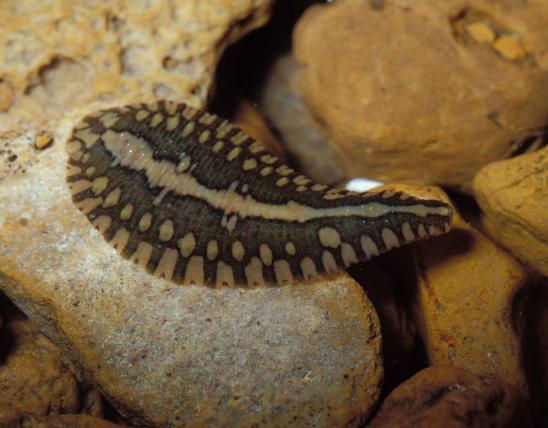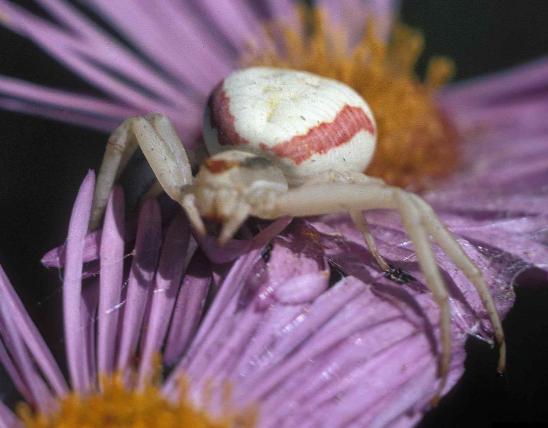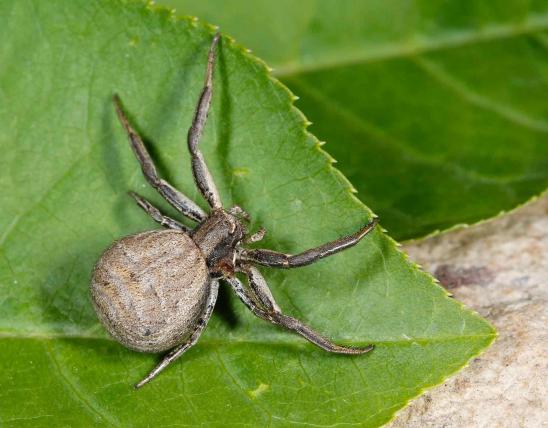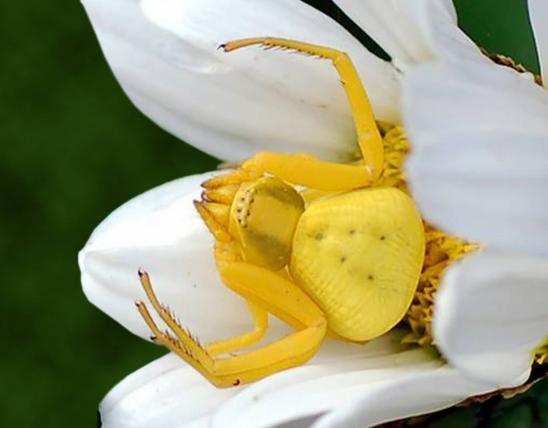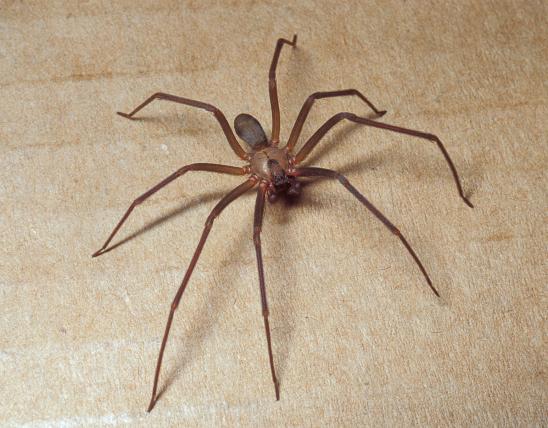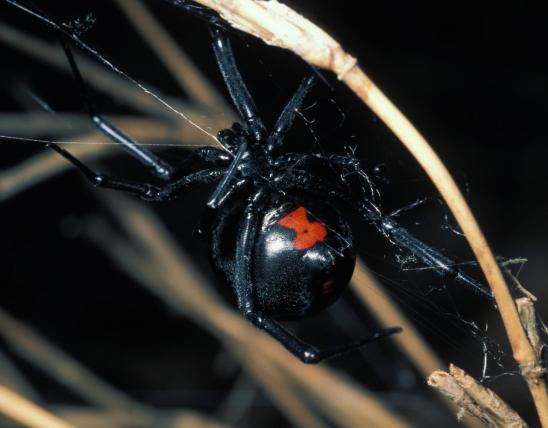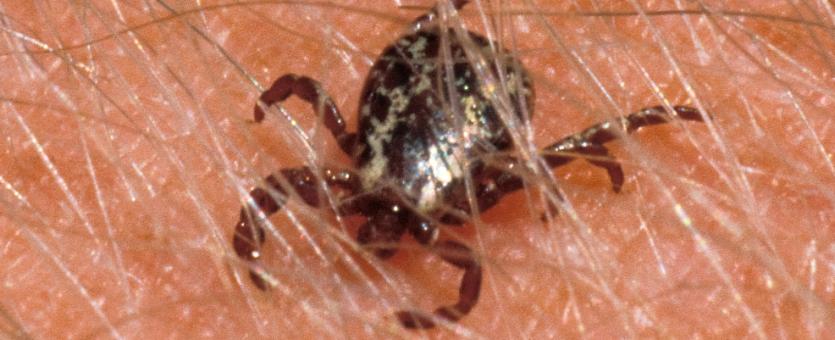
Ticks drink the blood of humans and other mammals. Because they can carry serious, sometimes deadly diseases, it's important to keep up to date on tick-related health issues, and protect yourself from their bites.
Note: This field guide page is intended to supply basic introductory biology and natural history information about three Missouri species of ticks. It is not intended to diagnose tick-borne diseases or provide treatment information. If you are experiencing possible symptoms of tick-borne illness or have questions about medical issues, please consult your doctor or other health care provider. If you have a tick-borne illness, it is important to begin treatment as soon as possible. For up-to-date, detailed information about tick-borne diseases, consult the US Centers for Disease Control and Prevention (CDC) and the Missouri Department of Health and Senior Services.
In their adult forms, our three species of hard ticks have 8 legs, a small plate over the main body on the top side, and tough "skin" (making it hard to crush a tick). Adults (depending on species) are 1/16 to 1/4 inch long (ticks are often described as about the size of a sesame seed). When engorged with blood, ticks may swell up to about 3/8 inch long and turn gray (especially the females). Younger, nymph forms also have 8 legs. During the larval, so-called seed tick stage, ticks have 6 legs and are about as large as a poppy seed.
Three species of hard ticks are commonly encountered in Missouri:
Lone star tick (Amblyomma americanum) — Females are easily identified by the white dot in the center of the back. Males often have dots or white streaks on the edge of their bodies. Very common in Missouri.
American dog tick (Dermacentor variabilis) — Newly hatched larvae are yellow. Adults have an ornate brown-and-white mottling on the dorsal side. Blood-engorged females are gray. Very common in Missouri.
Deer tick (blacklegged tick) (Ixodes scapularis) — Legs and upper body are black. Also common in Missouri.
Adult body length: roughly to ¼ inch; swelled with blood, to ⅜ inch. Size varies depending on species, life stage, and feeding status.

Statewide.
Habitat and Conservation
Most ticks are found in woodlands, tall grasses, weeds, and brushy areas. They’re most common in overgrown vacant lots, waste fields, and weedy edges of paths and trails, especially where wildlife is abundant.
Pets that go outdoors can bring ticks indoors with them.
Most ticks are most active April–July, but they may be encountered nearly any time of year.
If you walk in likely tick habitat, check yourself often for ticks. Use tick repellents. Always check yourself thoroughly at the end of the day, using a mirror. Learn how to remove ticks properly.
Food
Hard ticks suck blood, parasitizing mammals, including humans. They cannot jump or fly but only crawl. Their foraging strategy is called “questing,” where they climb to the top of a grass stem or branch of a bush, hold on with their hind legs, and extend their front pair of hooklike legs, waiting for a likely host to brush by. Ticks sense exhaled carbon dioxide and emitted body odors, as well as vibrations and changes in light, which can alert them to a possible approaching meal.
Status
Common. Ticks can transmit Lyme disease, Rocky Mountain spotted fever, Ehrlichiosis, Bourbon virus, Heartland virus, and other diseases.
If you are bitten, keep an eye out for unusual flulike symptoms or rashes for the next few weeks, such as a circular or oval red rash or bump at the bite site that expands like a bull’s-eye, or a dark-spotted rash, or fever, headache, backache, aching or stiff muscles and joints, and swollen glands.
Stay up to date on recent medical findings about ticks from the CDC and Missouri Dept. of Health. Different ticks can carry different diseases. If you are infected, it is essential to seek treatment as soon as possible.
Ticks can also transmit diseases to pets and other animals. Ask your veterinarian about ways to protect them from tick bites and tick-borne illnesses.
Life Cycle
The tick life cycle requires a sequence of different hosts. Ticks begin life as eggs. When they emerge as 6-legged larvae, they’re very small (the so-called seed ticks). After its first blood meal, typically from a small rodent, the larva drops off its host, molts, and becomes an 8-legged nymph. After attaching to and feeding on another mammal, the nymph drops to the ground and transforms into an 8-legged adult. Soon after feeding again and mating, which usually occurs on a host, the adult male dies. The female drops to the ground to lay thousands of eggs; then she dies. Few of her thousands of eggs will make it to adulthood.
Human Connections
Remove embedded ticks promptly. You cannot force a tick to remove itself; you must pull it out. Use tweezers, or a tool specially designed for removing ticks safely. Lightly pinch the tick as close to your skin as possible (in other words, don’t squeeze the tick’s body fluids into yourself). Pull the tick straight out. Wash and disinfect the area; apply antibiotics. For up-to-date information about human health issues, visit the websites of the US Centers for Disease Control and Prevention and the Missouri Department of Health and Senior Services.
Ecosystem Connections
While many people find parasites’ life strategy abhorrent, many others recognize that they are a fascinating part of nature. Instead of outright killing the animals they eat, parasites take only small amounts, allowing their hosts to live another day. However, disease-causing bacteria, protozoa, and viruses take advantage of the parasite's lifestyle, using the tick as a way to travel from mammal to mammal. It is these secondary diseases, which use a parasite as their transportation, that usually cause us the most trouble.
